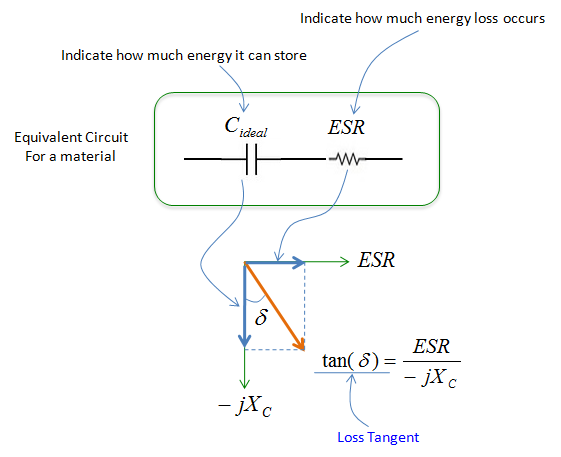|
RF |
||||||||||||||||||||||||||||||||||
|
Loss Tangent
If you are not working in the area of RF circuit design, you might have not heard of this term 'Loss Tagent'. It doesn't mean that you don't have this property in any other types of circuit. I mean we can ignore these property in any other circuit types (e.g, DC circuit or low frequency AC circuit etc). Let's suppose we want to make a capacitor or design a capacitive circuit (e.g, using Microstrip). What you want to get would be definitely to have a capacitor that has property of 100 % of capacitance (charge storage capability or energy storage capability), but in reality the component would have some resistance property which would cause energy loss. 'Loss Tangent' is an indicator to show how much 'unwanted resistance property (energy loss factors)' exists in a component. Simply put, it indicates the ratio of Capacitance portion (energy storage) and resistance (engery loss) portion of a component. Yes.. now I understand 'Loss' part of the term.. then what is the meaning of 'tangent' part ? I think it would be easier to use a simple high school math than trying to explain in plain language. As you learned in Impedance page, the capacitance part and resistance part of the component can be represented in single entity in a coordinate as illustrated below. If you take the 'Tangent' angle between the capacitance part and resistance part, it became the ratio of Capacitance portion (energy storage) and resistance (engery loss) portion of a component. That's why we call this ratio as 'Loss Tangent'.
Loss Tangent Value for Common Materials
|
||||||||||||||||||||||||||||||||||
